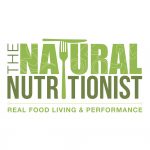
Hi Hut 2 Hut’ers.
The team here at Oscars100 have been working with Steph Lowe (The Natural Nutritionist) for a couple of years now and have had great success with her nutritional plans so we though we’d share some of her insights with you. As with most things nutrition needs to be tailored to the individual so if you would like to hear more from Steph please contact her at www.thenaturalnutritionist.com.au.
Steph has also provided a few great recipes for fuelling the night before and on the day.
If what you are doing is working…… then keep doing it.
Cheers Oscars100
Hut 2 Hut - Race Week Guideline
Why there is no need to carbohydrate load -
The term ‘carbohydrate loading’ has been used since the 1960’s to refer to a nutritional strategy that maximizes muscle glycogen (carbohydrate stored in the muscle) stores prior to an endurance event. Current guidelines recommend an exercise taper (reduction) while following a high carbohydrate diet (7-12g/kg body weight) in the one to four days prior to competition. The benefits are a 2-3% improvement in performance in events that extend beyond 90 minutes.
Just like we once though the world was flat and saturated fat was the cause of heart disease, carbohydrate loading is not necessary to maximize performance. Here’s why:
- The goal of an endurance athlete should be fat adaption.
In short, endogenous fuel stores from carbohydrate are limited. We have between 1600-2000 calories of muscle glycogen and even at 10% body fat, 72,000 calories, or 40 times that amount of energy stored in adipose tissue. The more fat adapted you become, the more you can tap into an almost bottomless energy reserve. On race day, this means less fuelling (read: less gut upset!) and minimal chance of “hitting the wall”, or the extreme case of glycogen depletion all-too-common in endurance competition.
Here’s how to become fat adapted:
- Fill your plate with non-starchy vegetables, quality protein and good fats.
- Cut out refined carbohydrates.
- Make refined sugar free eating a priority.
- Reduce your fructose intake.
- Train “empty” (fasted training) with a good fat black prior (i.e. expresso + grass-fed butter and/or coconut/MCT oil)
- The goal of an athlete is post-training nutrition.
To naturally increase and maximize muscle glycogen stores, focus on your training and your post-training fuel replenishment. The extent of your “carbohydrate loading” is what you do in the 60-minute window after your more intense or long training sessions (nutrient timing). Post exercise, your glycogen synthase enzyme, the enzyme which controls glycogen storage, is most active and what you eat counts. Top up your glycogen stores by all means, but to prevent a strong insulin response and therefore optimize growth hormone levels for both recovery and adaptation of muscles, please stick with 30-45g of carbohydrates. You don’t need six slices of white bread, Gatorade or Up & Go.
- Human physiology does not work the way some researchers and Dieticians would have you believe.
Muscle glycogen stores are limited, and just like a sink that is full, the excess overflows. And where does it go? Fat storage. Or if you’re lucky, it gets eliminated via your bowels. Regardless, every gram of glycogen carries two grams of water, so you’re most likely going to put on some form of weight and even if it is water weight, you definitely don't need the extra kilograms with you on the course.
- Have you ever tried to consume 7-12g/kg body weight of carbohydrate in one day?
It is actually almost impossible. Current guidelines state: “In order to consume the necessary amount of carbohydrate, it is necessary to cut back on fibre and make use of compact sources of carbohydrate such as sugar, cordial, soft drink, sports drink, jam, honey, jelly and tinned fruit.” There is no way such refined sugar can help performance. It’s almost like common sense got thrown out the window with the introduction of carbohydrate loading.
The night before race day
Just like the golden rule “nothing new happens on race day”, nothing new happens in race week. You're now training less, so you eat less. Simple. Your plate should consist of nutrient dense food from predominately non-starchy vegetables, quality protein and good fats. Add in a small amount (1/2-1 cup) of starch from sweet potato or quinoa in your evening meal but ensure you have practiced this in training first. My favourite pre-race evening meal is Grass-Fed Steak with Salad and Chips. You definitely don’t need to take part in the “pasta party”.
Race morning
Many athletes are surprised to hear this, but you can apply fasted training principles on race morning, as although your day may seem long in duration, fuelling can begin as early as you are comfortable with on race day. Your muscle glycogen levels should be full (provided you’ve refuelled and tapered well) and only your liver glycogen would have depleted slightly over night, making it unnecessary for more carbohydrates at this time. It may sound unconventional that you don’t need breakfast or a gel pre-race, but with optimal fat adaptation it is more than possible.
A caveat to this is if your start time is later and/or you prefer to eat on race day (determined via training practice) then by all means eat, but keep it to low carb, good fats and moderate protein, such as bacon and eggs or a smoothie you could even prepare the night before. Waking up three hours earlier than you need to, in order to eat your carbohydrate-rich meal, creates not only a logistical nightmare, but sets up the cycle for increased carbohydrate requirements, at the most inconvenient time.
During the race
This will of course be what you have practiced in training but most often a combination of liquid and solids fuels work well.
- To avoid commercial high fructose gels, use Freedom Fuel at 30-40g/hour or 1.5-2.0 serves/hour, relative to intensity.
- As your duration extends, include No Bake Energy Bars. They work great in combination with Freedom Fuel and you should need approximately 1.0/hour, relative to intensity.
- Towards your typical day-to-day meal times, approximate an aid station where you can aim to eat a small meal such as chicken soup. You will be craving savoury and salt by this time in the day.
Example Fuelling Strategy
Hour 0-1 water, lemon and salt only (natural electrolytes)
Hour 1-2 1.5 serves Freedom Fuel
Hour 2-3 1.5 serves Freedom Fuel
Hour 3-4 1.5 serves Freedom Fuel
Hour 4-5 1.0 serve No Bake Energy Bars
Aid station: 1 cup of chicken soup
Continue to alternate between water, natural electrolytes and Freedom Fuel at 15 minute intervals. Set an alarm on your watch to remind you.
Post race
This is where nutrient timing is important. Remember you need smaller amounts (30-45 grams) of carbohydrates post-training for muscle glycogen replenishment. A smoothie with banana is a fantastic example. Scale this based on intensity and subsequent recovery and performance.
For example, if you start with 30 grams post training and your recovery is not optimal in the days following, increase to 45 grams after a similar event and compare. Being an intuitive athlete is important here.
For more information or personalised support with your nutrition please visit www.thenaturalnutritionist.com.au.
Here are some great recipes for you to try.
Grass-Fed Steak with Salad and Chips
Ingredients (Serves 2)
- 2 grass-fed steaks of your choice
- 1 teaspoon cold-pressed extra virgin coconut oil
- Sea salt and pepper, to taste
- Broccoli and Kale Salad
- Cinnamon Roasted Sweet Potato Chips
Method
- Heat coconut oil in a pan and cook seasoned steak for 6-8 minutes on each side.
- Remove from the heat, serve with Broccoli and Kale Salad and Cinnamon Roasted Sweet Potato Chips.
Broccoli and Kale Salad
Ingredients (Serves 3-4)
- 2 bunches of broccoli
- 100g kale
- 1 tablespoon cold pressed extra virgin coconut oil
- ½ cup flaked almonds
- ¼ cup Goji berries
- ½ large avocado, diced
- ¼ cup extra virgin olive oil (EVOO)
- The juice of ½ lemon
- ¼ teaspoon sea salt
- Goat's feta to top
Method
- Dice broccoli heads into small florets and cut the stems into bite size pieces. Lightly steam all and allow to cool in a large mixing bowl.
- Sauté kale in coconut oil until soft and add to the bowl.
- Top with almonds, Goji berries and avocado.
- Combine EVOO, lemon juice and salt in a small bowl and dress the salad.
- Sprinkle with goat's feta and serve with your choice of protein. Leftovers are perfect for lunch the next day.
Cinnamon Roasted Sweet Potato Chips
Ingredients (Serves 2)
- 1 medium sweet potato
- 2 tablespoons cold pressed extra virgin coconut oil
- 2 teaspoons cinnamon
- Sea salt, to taste
Method
- Preheat oven to 180°C.
- Slice sweet potato into thin chip-like pieces.
- Sprinkle with oil, cinnamon and salt and bake for 20 minutes.
- Finish off under the grill until crispy and serve.
Freedom Fuel
Ingredients (Serves 1)
- 2 teaspoons rice malt syrup
- 1 teaspoon coconut oil/medium chain triglyceride (MCT) oil
- ¼ cup raspberries
- The juice from ¼ lemon
- A pinch of sea salt
- A dash of hot water
Method
- Blend all ingredients until smooth.
- Pour through a strainer to remove pips. Transfer carefully into a gel flask or water bottle and seal well.
Notes
- Coconut oil is fine in warmer weather but it will solidify and clog the pop-top of your flask/bottle in cooler weather, so MCT oil is preferable here.
- For MCT oil, a brand such as Melrose is available here: bit.ly/tnnonline
- Blueberries or strawberries can be used in place of raspberries.
- Once made, it will only last for two days but freezes well.
- If you are training/racing in warmer weather please consider freezing your FF.
- FF may not be suitable for during a long hot race as it is possible that the fruit may start to ferment. In this situation we recommend VFuel, available here: bit.ly/tnnonline
No Bake Energy Bars v2
Ingredients (Makes 8-10)
- 1 tablespoon cold pressed extra virgin coconut oil
- 1 cup quinoa flakes
- ½ cup unsweetened coconut flakes
- ½ cup almonds, chopped
- 2 tablespoons pepitas
- 2 tablespoons sunflower seeds
- 2 tablespoons Goji berries
- ½ cup rice malt syrup
- ¼ teaspoon sea salt
- 1 teaspoon pure vanilla extract
Method
- Preheat grill.
- Place quinoa, coconut, almonds and seeds onto a lightly greased baking tray and toast for 5 minutes, stirring mid-way.
- Pour toasted mix into a large bowl and stir through Goji berries.
- In a medium saucepan, add rice malt syrup, salt and vanilla and bring to the boil (about 4-5 minutes until thick), stirring constantly. Your syrup should be thick and golden, but take care not to overcook as it will burn.
- Pour hot syrup over dry mix and combine thoroughly.
- Line a cookie sheet pan or cake/bread tin with greaseproof paper, or lightly coat in coconut oil.
- Transfer mixture and press firmly until flat (grease your hands with coconut oil to prevent sticking).
- Pop in the fridge to set first, then remove before slicing. Once at room temperature, cut into 8-10 bars. Store in an airtight container or wrap individually in glad wrap or cut into bite sized pieces.

